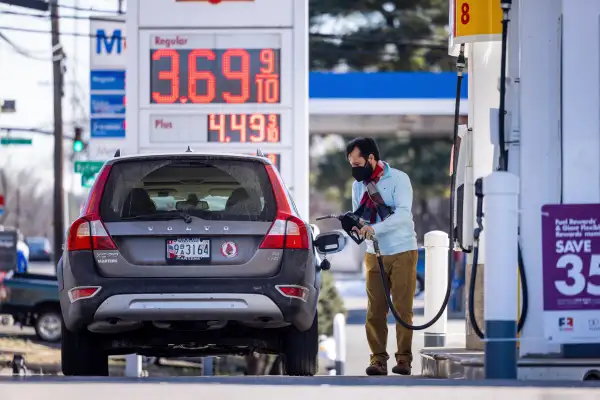Gas Prices Were Supposed to Finally Drop This Month — but They Just Keep Rising

Drivers were supposed to get some relief at the pump after gas prices soared some 50% percent in 2021. But so far in 2022, fuel prices have only kept creeping higher.
The sharp spike in gas prices has been hitting consumers hard over the past several months. In November, the National Energy Assistance Directors’ Association estimated that an average family could expect to spend an extra $103 per month on gasoline.
Yet at the end of the 2021, a measure of hope arrived in the form of a forecast from the U.S. Energy Information Administration that prices would fall to an average of $3.01 in January and average $2.88 for the whole of 2022.
Unfortunately, the prediction isn't panning out. At least not yet. Gas prices are still ticking upwards. The average price of a gallon of regular gas on Thursday was $3.45, according to AAA, compared to $3.29 a month ago and $2.41 at this time last year.
What’s more, gas prices are rising despite a number of factors that were generally expected to push them down. In November, the Biden Administration announced it would release 50 million barrels of oil from the country’s strategic reserves in an attempt to tame prices. During previous surges of the coronavirus, gas prices have dipped as people stayed home and demand for travel (and fuel) fell. Gas prices decreased somewhat as cases of the Omicron variant soared late last year, and experts predicted the trend would continue into 2022.
Prices are also up despite the seasonal trends that typically push them downwards. In the winter, gas stations generally switch to a different blend of fuel that is more suited to colder weather. Because that winter blend is cheaper than the fuel blend sold in the warmer months — and because the demand for gas also tends to decrease when the weather is colder since fewer people are traveling — the price of gas usually falls at this time of year.
Why are gas prices rising?
Despite all of those factors, gas prices are still inching upward. That’s thanks in large part to the price of crude oil, which has risen by some 18% in the United States over the course of the last month, from roughly $76 per barrel in the final days of December to $87 per barrel today.
The price of crude oil is very sensitive to geopolitics. Right now, ongoing tensions between Russia (one of the world’s largest oil producers) and Ukraine are making traders nervous.
Patrick De Haan, head of petroleum analysis at GasBuddy, said the continued rise in gas and oil prices despite factors that should be pushing those prices down is “a testament to how concerned oil markets are with unrest in oil producing nations.” He estimated that crude oil prices will stay above $80 per barrel for the time being and added that they “could rise even more significantly if there is any further deterioration in the situation.”
And of course, if oil prices stay high, gas prices will stay high too. “As long as the price [of] oil remains elevated, consumers will be feeling it at the pump,” AAA spokesperson Andrew Gross said in a statement.
More from Money:
Gas Prices Will Soon Drop Below $3 a Gallon: Government Forecast
